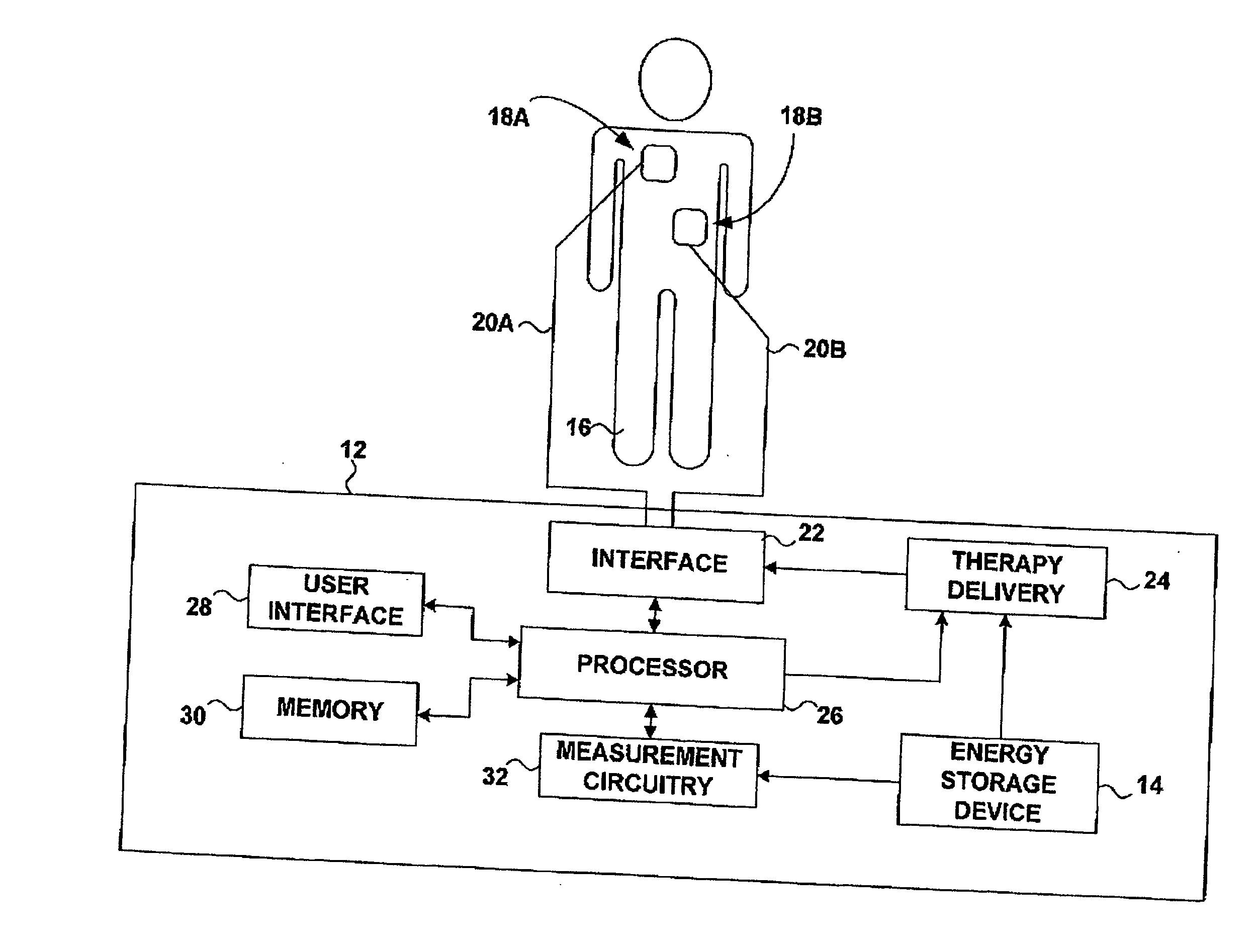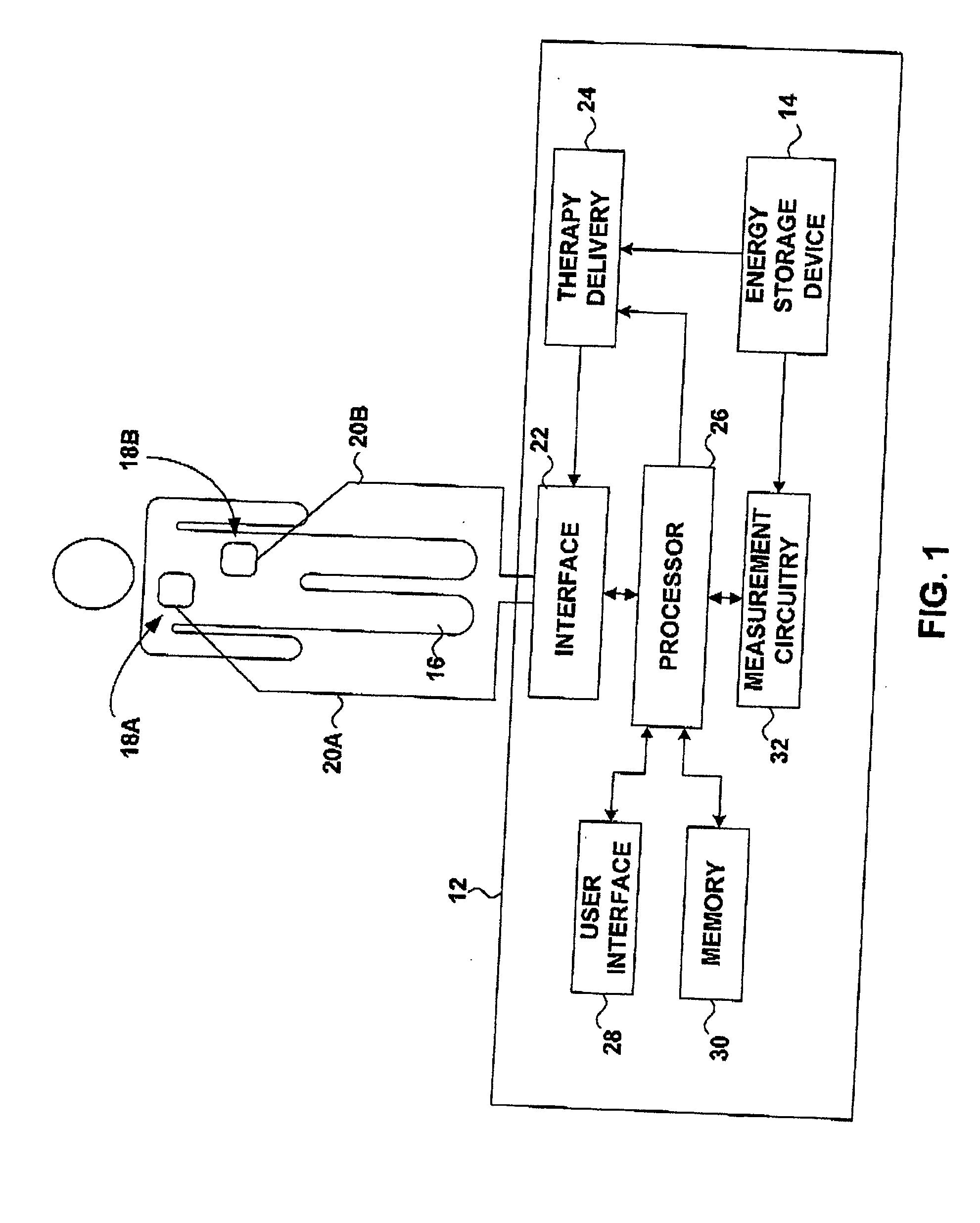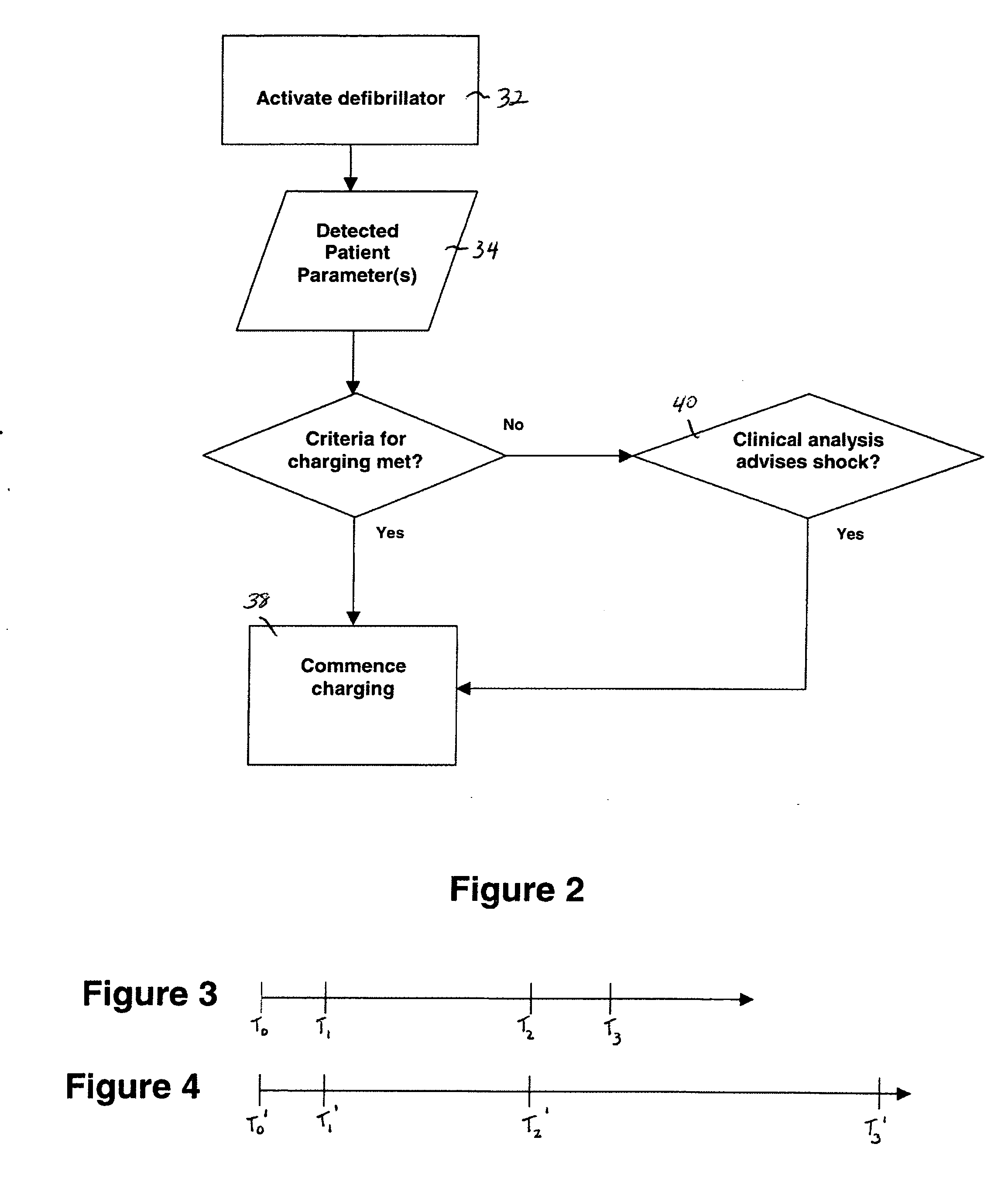External defibrillator with charge advisory algorithm
a technology of external defibrillators and charging algorithms, applied in the direction of heart defibrillators, electrotherapy, therapy, etc., can solve the problems of increasing the cost of operation, increasing manufacturing costs, and worrying about the potential for accidental delivery of energy, and achieve the effect of increasing the charge ra
- Summary
- Abstract
- Description
- Claims
- Application Information
AI Technical Summary
Benefits of technology
Problems solved by technology
Method used
Image
Examples
Embodiment Construction
[0024] Reference will now be made in detail to the present preferred embodiments of the invention, an example of which is illustrated in the accompanying drawings. Wherever possible, the same reference numbers will be used throughout the drawings to refer to the same or like parts. An exemplary embodiment of the medical device of the present invention is shown in FIG. 1, and is designated generally by reference numeral 18.
[0025] In FIG. 1, defibrillator 12 is shown coupled to a patient 16 by electrodes 18A and 18B (collectively “electrodes 18”). Electrodes 18 may include hand-held electrode paddles or adhesive electrode pads placed on the skin of patient 16. Electrodes 18 are coupled to defibrillator 12 via respective conductors 20A and 20B (collectively “conductors 20”) and an interface 22. In a typical application, interface 22 includes a receptacle, and conductors 20 plug into the receptacle.
[0026] Interface 22 includes a switch (not shown in FIG. 1) that, when activated, coupl...
PUM
 Login to View More
Login to View More Abstract
Description
Claims
Application Information
 Login to View More
Login to View More - R&D
- Intellectual Property
- Life Sciences
- Materials
- Tech Scout
- Unparalleled Data Quality
- Higher Quality Content
- 60% Fewer Hallucinations
Browse by: Latest US Patents, China's latest patents, Technical Efficacy Thesaurus, Application Domain, Technology Topic, Popular Technical Reports.
© 2025 PatSnap. All rights reserved.Legal|Privacy policy|Modern Slavery Act Transparency Statement|Sitemap|About US| Contact US: help@patsnap.com



